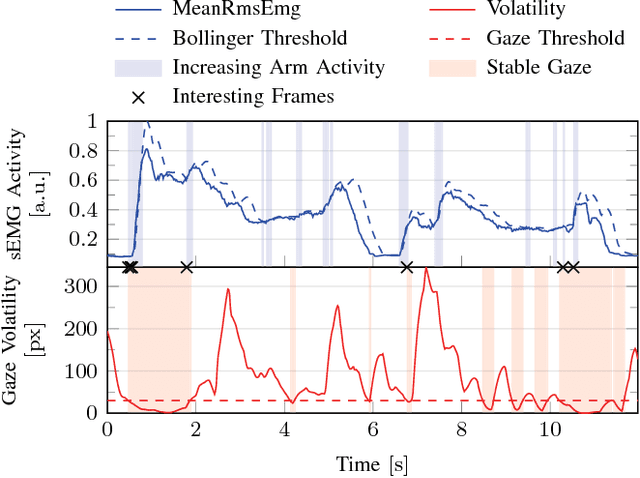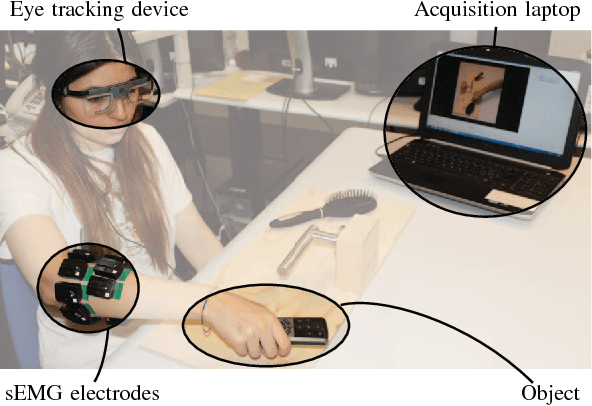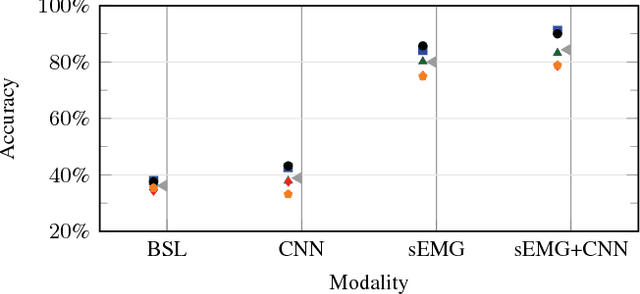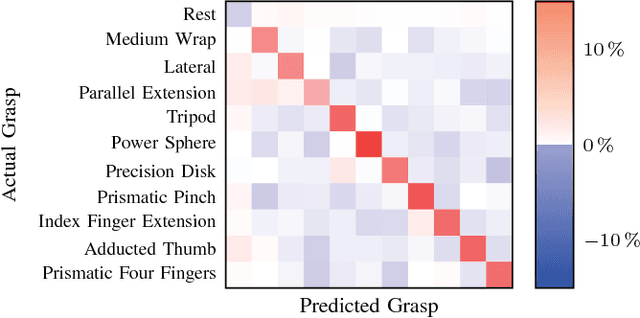Arjan Gijsberts
Visual Cues to Improve Myoelectric Control of Upper Limb Prostheses
Aug 29, 2017



Abstract:The instability of myoelectric signals over time complicates their use to control highly articulated prostheses. To address this problem, studies have tried to combine surface electromyography with modalities that are less affected by the amputation and environment, such as accelerometry or gaze information. In the latter case, the hypothesis is that a subject looks at the object he or she intends to manipulate and that knowing this object's affordances allows to constrain the set of possible grasps. In this paper, we develop an automated way to detect stable fixations and show that gaze information is indeed helpful in predicting hand movements. In our multimodal approach, we automatically detect stable gazes and segment an object of interest around the subject's fixation in the visual frame. The patch extracted around this object is subsequently fed through an off-the-shelf deep convolutional neural network to obtain a high level feature representation, which is then combined with traditional surface electromyography in the classification stage. Tests have been performed on a dataset acquired from five intact subjects who performed ten types of grasps on various objects as well as in a functional setting. They show that the addition of gaze information increases the classification accuracy considerably. Further analysis demonstrates that this improvement is consistent for all grasps and concentrated during the movement onset and offset.
Adaptive Learning to Speed-Up Control of Prosthetic Hands: a Few Things Everybody Should Know
Feb 27, 2017


Abstract:A number of studies have proposed to use domain adaptation to reduce the training efforts needed to control an upper-limb prosthesis exploiting pre-trained models from prior subjects. These studies generally reported impressive reductions in the required number of training samples to achieve a certain level of accuracy for intact subjects. We further investigate two popular methods in this field to verify whether this result equally applies to amputees. Our findings show instead that this improvement can largely be attributed to a suboptimal hyperparameter configuration. When hyperparameters are appropriately tuned, the standard approach that does not exploit prior information performs on par with the more complicated transfer learning algorithms. Additionally, earlier studies erroneously assumed that the number of training samples relates proportionally to the efforts required from the subject. However, a repetition of a movement is the atomic unit for subjects and the total number of repetitions should therefore be used as reliable measure for training efforts. Also when correcting for this mistake, we do not find any performance increase due to the use of prior models.
 Add to Chrome
Add to Chrome Add to Firefox
Add to Firefox Add to Edge
Add to Edge